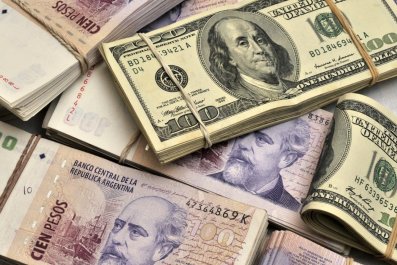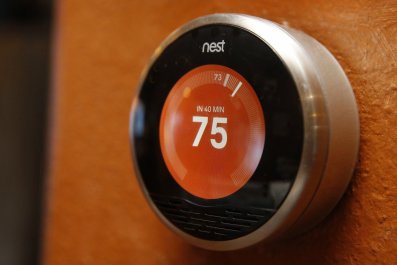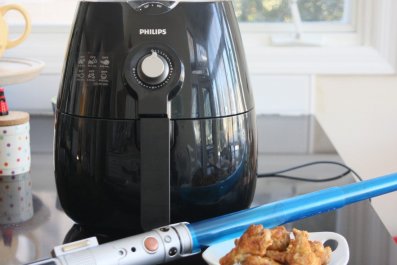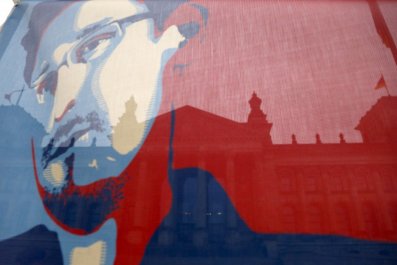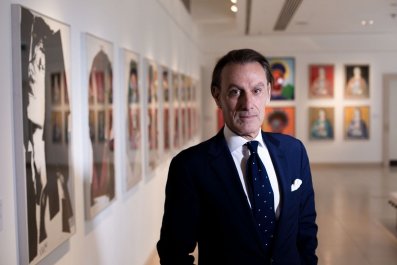Twenty three years ago, at the age of 5, Daniel Schoonover was following his parents through an upscale hotel when he stumbled abruptly across a realization: He was dreaming, but he didn't have to wake up. Suddenly, the hotel filled with toys. "I remember recognizing that the laws of the real world didn't apply to me anymore," Schoonover says. "Years later, I realized it wasn't such a crazy thing. People have these experiences all the time."
The young Schoonover had unwittingly discovered lucid dreaming, during which sleepers are somehow yanked out of the unconscious state that usually characterizes the dream state but continue dreaming; they are aware of their surroundings - and often even taking the reins of their fantasies. First mentions of this phenomenon stretch back centuries to Tibetan Buddhists and Aristotle; modern-day enthusiasm for the semi-altered state first bubbled up in the mind-expanding 1970s. But in the plugged-in, emoji-drenched world of 2014, lucid dreaming is having a resurgence of a different sort: as a virtual reality with the potential to increase productivity in waking life.
From business leaders solidifying big presentations to students honing their skills before tests, basketball players practicing slam dunks or artists seeing past the limits of their waking imaginations, the benefits of lucid dreaming are proclaimed loudly and wildly by its devout practitioners - self-named "oneironauts," from the Greek word for dreaming. There's already a subreddit for this, and recent research even suggests that hard-core video gamers are far more likely to experience lucid dreams than their nongaming peers.
Unfortunately, putting yourself into a lucid dream isn't as easy as strapping yourself into a gaming console. While statistics are hard to come by, experts estimate that only about half of adults have ever experienced a lucid dream, but 20 percent have them at least once a month. And those who want to do it with any regularity often need to dedicate themselves to strict mental training regimens to even be able to recognize they're dreaming.
Schoonover has developed a shortcut. He's just one of many young entrepreneurs hoping to capitalize on the untapped potential of a new movement that treats the brain as something closer to hackable software than the spiritual vessel revered by New Agers. This week, Schoonover and business partner Andrew Smiley closed out their Kickstarter to fund the Aurora - a new "dream-enhancing headband" - with roughly $240,000 donated by a little more than 1,400 backers.
To understand how it works, it helps to know a little about dreams. In regular REM dreaming, the prefrontal cortex - an area of the brain behind the forehead (and tied to consciousness, personality, and decision-making) - stays pretty quiet. In lucid dreaming, that light is switched on, albeit at lower levels than while you're awake.
Schoonover says the Aurora headband will track brain-wave patterns to tell when dream-rich REM sleep is happening, and then give users a small sensory nudge to (one hopes) alert them to the fact that they are dreaming. This, in theory, will switch on their prefrontal cortex and then allow their newly aware dream selves to reap the benefits of lucidity.
While its brain-wave-detecting technology has been tested and verified, the Aurora has yet to be systematically tested on human subjects. It's slated to be released in June and will cost $175.
"We spend almost one third of our lives asleep," the Aurora Kickstarter pitch says. "Why not make the most of that time?" Believing night to be an untapped source of brain enhancement time, Schoonover and Smiley are fiddling with other uses for the Aurora as well. They think it might be able to eventually aid in memory consolidation during sleep.
The Aurora isn't the first product to try to make the muddled path to lucid dreaming easier, nor is it the first to play to the life-hacker ethos of self-optimization. At last count, there were 65 iPhone apps relating to lucid dreaming. A crude, timer-based version of the current Aurora headband raised more than $500,000 on Kickstarter in 2012, while the godfather of lucid dreaming, Stephen LaBerge, marketed his lucid dream-inducing prototype in 1995. LaBerge started researching lucidity as part of his Ph.D. at Stanford in the late 1970s, paving the way by demonstrating that lucid dreaming could be triggered by external cues. But LaBerge, who is still researching the topic, says his ethos swings a bit differently from the new generation of lucid dreamers. He wrote in an email to Newsweek that it comes down to "exploitation versus exploration."
"Yes, [it's] self-optimization," he explained about lucid dreaming. "But [it's] not to be confused with getting more work done in your sleep. It's getting more living in your life."
In the face of an ever more hectic waking life, our demands seem to be encroaching, however tentatively, on our nightly slumbers. But LaBerge hasn't lost the argument yet: The fantasy of full dream control is still just a dream. Until then, everyone can rest easy and, as the Aurora proclaims, "dream without limits" - and without any productivity quotas.




